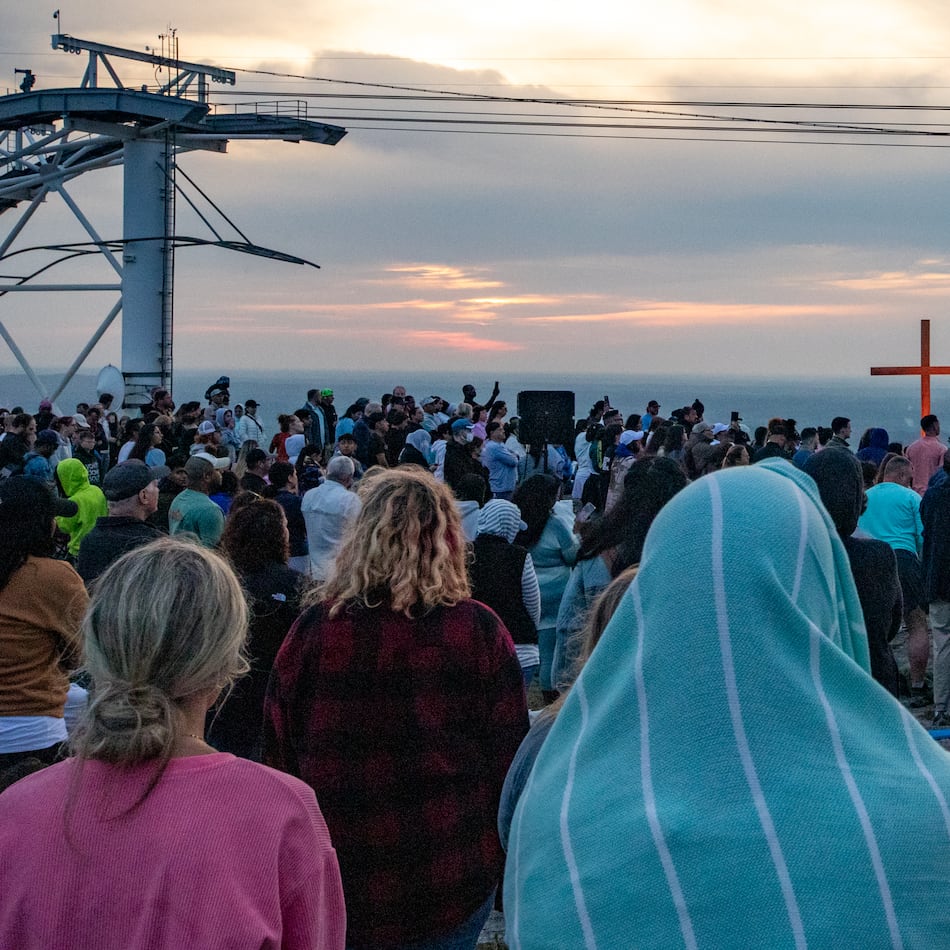Retired scientists Friday held a vigil in front of the Centers for Disease Control and Prevention on Clifton Road, as employees inside waited to hear whether their jobs would be eliminated in the latest round of cuts by the Trump administration.
The crowd waved signs at passing traffic with slogans such as “CDC Protects America”; “Save the CDC”; and “CDC Prevents Death Disease Disability.”
Dr. Barbara Marston, an epidemiologist who retired from the CDC in 2022, attended Friday’s vigil and said her former colleagues inside were told that cuts will be made by branch, and that termination letters would arrive soon.
“These cuts are the opposite of efficiency,” Marston said. “It’s not throwing good money after bad. It’s money that has almost eliminated polio, and made impressive progress in helping fight HIV.
“We have to finish the job.”
On Thursday, the White House said it would eliminate 2,400 employees at the CDC’s two offices in Atlanta, about 18% of its workforce.
The restructuring plan caps weeks of tumult
HHS has been embroiled in rumors of mass firings, the revocation of $11 billion in public health funding for cities and counties, a tepid response to a measles outbreak, and controversial remarks about vaccines from Kennedy, The Associated Press reported.
Kennedy said a “painful period” lies ahead for HHS, which is responsible for monitoring infectious diseases, inspecting foods and hospitals, and overseeing health insurance programs for nearly half the country.
Former CDC officials say the cuts would ultimately harm the American public because the work of the CDC would be curtailed.
The American Federation of Government Employees, the union that represents the scientists and researchers, was informed on Thursday of the cuts and told that any roles addressing noninfectious diseases would be moved to the National Institutes of Health.
Workers will be asked to stay on for 30 or 60 more days before termination, a union official told The Atlanta Journal-Constitution.
Credit: Ben Gray for the Atlanta Journal-Constitution
Credit: Ben Gray for the Atlanta Journal-Constitution
In the near term, the loss of high-paying jobs will impact the local economy. Longer term, many scientists will seek employment in other states or abroad, experts told the AJC.
Dr. Mark Pallansch, retired director of the Division of Viral Diseases at the CDC, and who oversaw the domestic measles and polio programs, said the cuts “will decimate the U.S. health system and will take a generation for us to rebuild.”
Nature magazine said Thursday that 75% of U.S. scientists who answered its recent poll were looking for jobs in Europe and Canada. The poll’s sample size was over 1,600 readers.
Patrick Cramer, President of the Max Planck Society in Germany, told German broadcaster Deutsche Welle that applications from U.S. scientists had doubled and tripled in some research areas.
Credit: Ben Gray for the Atlanta Journal-Constitution
Credit: Ben Gray for the Atlanta Journal-Constitution
The prospect of a U.S. science brain drain is seen as “a great opportunity for Europe as a research location,” Cramer said.
Radio France International reported 40 U.S. scientists had contacted Aix-Marseille University about research opportunities.
The governments of China and South Korea are also seeking to attract U.S. scientists who wish to leave, Deutsche Welle reported.
Dr. Mark Rosenberg, former assistant surgeon general and rear admiral in the United States Public Health Service, said the cuts would derail public health globally and reduce efforts to stop maladies like polio from entering the country, and measles outbreaks from spreading.
It won’t be possible for the private sector to replace the CDC’s work, and many younger researchers who benefit from National Institutes of Health and CDC early career programs won’t pursue public interest work, he added.
“If you don’t have CDC doing this work, each state will have to set up its own system. It will essentially duplicate a system 50 times. It will be unaffordable and ineffective.”
Pallansch said the CDC has always been short staffed and further cuts won’t serve the public.
“What we are seeing with the measles outbreak is a good example,” he said. “It’s being handled by state authorities. But when it becomes a multistate problem, that’s where the CDC plays a role. And that’s not happening right now.”
Credit: Ben Gray for the Atlanta Journal-Constitution
Credit: Ben Gray for the Atlanta Journal-Constitution
“You can’t do more with less. You do less with less,” he added. “It will fall to the state and local levels to take up the slack, though they are chronically underfunded.”
As of February 2025, the CDC had employed approximately 13,000 workers, most of them in Georgia.
Some worked at the Georgia Department of Health, others were assigned to the Cobb, Gwinnett, Macon, and DeKalb county boards of health, though all were paid out of the CDC budget.
With the layoffs, HHS’s headcount drops from 82,000 full-time employees to 62,000, agency officials said Thursday.
Credit: Ben Gray for the Atlanta Journal-Constitution
Credit: Ben Gray for the Atlanta Journal-Constitution
About the Author
Keep Reading
The Latest
Featured

